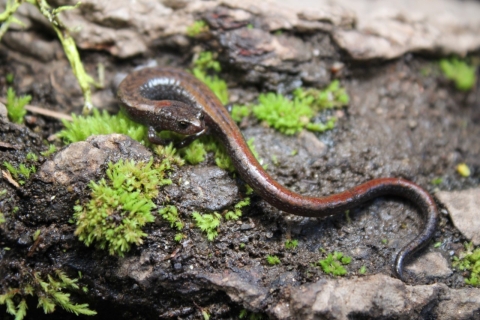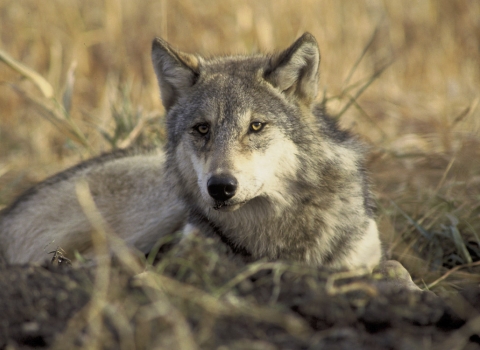The U.S. Fish and Wildlife Service is seeking public comment on its proposal to provide protections and designate critical habitat under the Endangered Species Act (ESA) for two slender salamanders living in California’s southern Sierra Nevada.
Using the best available science, the Service evaluated the status of three salamanders found in Kern, Inyo and Tulare counties in California. The Service is proposing to list the relictual slender salamander as endangered and the Kern Canyon slender salamander as threatened. The Service determined that the Kern Plateau salamander is not warranted for listing. With the proposed listing of the Kern Canyon slender salamander, the Service is proposing a special 4(d) rule that exempts activities related to fuels management to reduce the risk of catastrophic wildfire from the ESA's section 9 prohibitions for take of a listed species.
The Service is also proposing to designate 2,685 acres of critical habitat for the relictual slender salamander and 2,051 acres of critical habitat for the Kern Canyon slender salamander. Ninety-two percent of the proposed critical habitat falls within Sequoia National Forest and lands managed by the Bureau of Land Management. The remaining 8% falls on private lands. However, the designation of critical habitat rarely impacts private landowners unless they are conducting activities with federal funding or permitting.
All three salamanders are found near water sources such as seeps, perennial springs and streams and are thought to rarely venture more than 50 feet from cover objects such as rocks and logs. The two salamander species proposed for listing—the relictual and Kern Canyon salamanders—are restricted to small areas that are almost completely within Sequoia National Forest, primarily near creeks and small watersheds that flow into the Kern River. Neither species is known to use the mainstem of the Kern River itself, so the designation of critical habitat in this area is not expected to affect the operations of Isabella Dam or regulate water releases or flows into the Kern River. The Kern Plateau salamander is found in a larger range that includes sites in Sequoia National Forest, Inyo National Forest, Owens Valley and Indian Wells Valley.
“Given their reliance on water and cool, humid habitat, the greatest ongoing threats to the salamanders include the impacts of climate change climate change
Climate change includes both global warming driven by human-induced emissions of greenhouse gases and the resulting large-scale shifts in weather patterns. Though there have been previous periods of climatic change, since the mid-20th century humans have had an unprecedented impact on Earth's climate system and caused change on a global scale.
Learn more about climate change such as drought and catastrophic wildfire,” said Michael Fris, field supervisor for the Service’s Sacramento Fish and Wildlife Office.
The relictual slender salamander is most susceptible to these changes as its populations are limited in the Sierra Nevada and loss of habitat in its range could have major implications on the survival of the species.
When a species is listed, the Service works with Tribes, states, federal agencies, private landowners and other stakeholders to find solutions to conserve and recover imperiled species. The U.S Forest Service considers all three salamanders to be “Species of Conservation Concern” and is already working to minimize impacts on riparian riparian
Definition of riparian habitat or riparian areas.
Learn more about riparian corridors, as well as reduce the risk of major wildfires in salamander habitat.
“We are grateful to have the U.S. Forest Service as a partner. They are using land management techniques that reduce the risk of catastrophic wildfire and keep small springs and streams available for the salamanders,” said Fris.
The Service is seeking public comment on its proposal to list and designate critical habitat for the relictual and Kern Canyon slender salamanders. The documents will publish in the Federal Register on October 18, 2022. The publication will open a 60-day public comment period. The Service will consider comments from all interested parties received by December 19, 2022. The proposal, information on how to submit comments, GIS shapefiles and legal boundaries can be found on www.regulations.gov by searching under docket number FWS-R8-ES-2022-0081.
The U.S. Fish and Wildlife Service works with others to conserve, protect, and enhance fish, wildlife, plants, and their habitats for the continuing benefit of the American people. For more information about our work and the people who make it happen, visit the Sacramento Fish and Wildlife Office website. Connect with us via Facebook, Twitter, YouTube, and Flickr.




